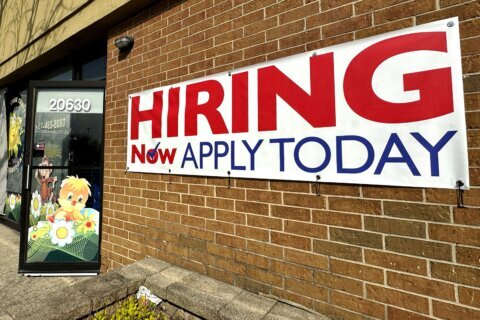It’s been nearly a decade since the end of the Great Recession, and unemployment in the U.S. has reached historic lows, giving workers the upper hand in the job market.
“Maybe we’re finally getting to that point where demand for labor and supply of labor have met,” says Andy Challenger, vice president of Challenger, Gray & Christmas, an executive outplacement firm. “Wages hopefully will begin to rise at a quicker pace.”
While most workers would appreciate higher salaries, that’s not the only development to look out for as the new year unfolds.
Here are job outlook trends to watch in 2019:
— Rising wages.
— Bolstered benefits.
— Relaxed hiring standards.
— New recruiting techniques.
— Diverse employment opportunities at technology companies.
— Sexual harassment policy changes.
[See: 8 Skills That Set Millennials Apart at Work.]
Rising Wages
After several years of economic growth yet stagnant salaries, wages are finally starting to rise. That’s true for workers who switch jobs and stay at jobs, though the former set have typically seen larger salary increases, Challenger says.
“Job switchers get the majority of increases when companies need to get people in. Job stayers start to get more of the wage increases when companies are focused on retention, making sure the employees they have are happy and staying,” he explains. “We might be seeing a little bit of a switch toward companies saying we’re worried about our employees getting poached, and we need to retain people on our payrolls.”
In 2018, wages increased nearly $1 per hour across all industries, according to ADP Research Institute, which analyzed anonymized payroll data from nearly 1 in 6 U.S. workers. Job switchers saw an average wage increase of 5.8 percent, or $1.90, while job stayers saw a 4.7 percent increase, or $1.34.
Average hourly wages for women grew more last year than for men (3.5 percent compared to 2.2 percent), ADP reports. However, men continue to outearn women.
As of Jan. 1, 2019, the minimum wage rose in 19 states, and several more states will also see their minimums increase over the course of the year. For example, in New York City, the minimum wage is now $15 for businesses with at least 11 employees.
Bolstered Benefits
Employees aren’t only earning better wages these days. To attract and retain workers, employers are also improving the benefits they offer. Flexible hours and remote work opportunities are becoming more common, as are offers to invest in personal and professional development and opportunities for tenured professionals to take sabbaticals.
“Perks are happening more and more,” says Dawn Fay, senior district president at Robert Half human resources consulting firm. “Many people are changing their office space to be more attractive for workers. There are gym memberships and snacks in the office.”
Relaxed Hiring Standards
With their overwhelming need for labor, companies have started relaxing their standards and expediting their hiring processes, Fay says. They’re less concerned about finding perfect candidates than securing people with strong soft skills who are capable of being trained.
“Because of technology, things change at a much more rapid rate than they ever have,” Fay says. “People are looking for individuals with good communication skills but who are also adaptable and flexible.”
These slackening demands present opportunities for gig workers and freelancers to find full-time positions. It’s an option worth considering while the job market is still hot, Challenger says. “If there is a downturn, and there inevitably will be at some point, all those people are going to be laid bare to economic forces,” he says. “It’s a good time to go get employed and get a little stability.”
[See: What You Need to Know About Getting a Security Clearance.]
New Recruiting Techniques
Technological developments and the scarcity of job seekers have motivated many companies to change their recruiting tactics.
To catch potential candidates’ attention, employers are relying more on social media to advertise job openings, says Ariel Schur, CEO of ABS Staffing Solutions. They’re also offering rewards to existing employees who refer qualified candidates — sometimes friends, family members and former colleagues — to apply for available positions.
Hiring managers are increasingly interested in candidates who have strong soft skills and who fit well in the cultures of their companies. They’re trying to test these factors using personality tests and machine learning assessment tools such as databases of potential employees and recorded video interviews.
When assessing applicants on their communication skills and appreciation for office values, companies are “really delving into a deeper level of trying to discern their skill level and knowledge,” Schur says.
Diverse Employment Opportunities at Technology Companies
Job opportunities at technology companies look strong in the new year. With a projected 30.7 percent growth by 2026 and median salary of $101,790, according to the Bureau of Labor Statistics, software developers have top prospects in the labor market.
But workers don’t have to be ace coders to benefit from the technology revolution sweeping workplaces and industries. In addition to developers, tech companies need to hire experts in human resources, accounting and sales and marketing. For example, only half of the jobs Amazon plans to bring to its proposed two new headquarters in New York and Virginia classify as tech roles, reports the Wall Street Journal.
That’s not just the case for Amazon. Last year, 43 percent of all open jobs posted on Glassdoor.com by U.S. tech employers were for nontechnical roles, according to a sample of relevant companies with at least 100 job postings as of June 2018.
[See: What Business Jargon Really Means.]
Sexual Harassment Policy Changes
After shaking up C-suites and boardrooms across industries, the #MeToo movement against sexual harassment is prompting companies to change their policies and require more thorough training about appropriate office behavior. That’s due in part to the demands of employers’ insurance companies, which set high standards for covering discrimination claims.
“People need to be very careful about what they put in writing. Those things are going to be scrutinized a lot closer,” says Bryan Arce, managing partner at the law firm Phillips & Associates. “What’s written doesn’t necessarily connote the emotion behind it, and someone could take it as discriminatory.”
On the horizon, Arce sees new awareness of the discrimination and harassment some transgender people face at work.
“Everyone has a right to identify however they feel, and those are new things that aren’t being addressed in harassment training. This is such a fluid part of the law right now,” he says. “That’s starting to become more prevalent as this newer generation embraces this more openly.”
More from U.S. News
How to Change Careers Successfully
Browsing Your Boss’s Bookshelf
2019 Job Outlook for Workers originally appeared on usnews.com







